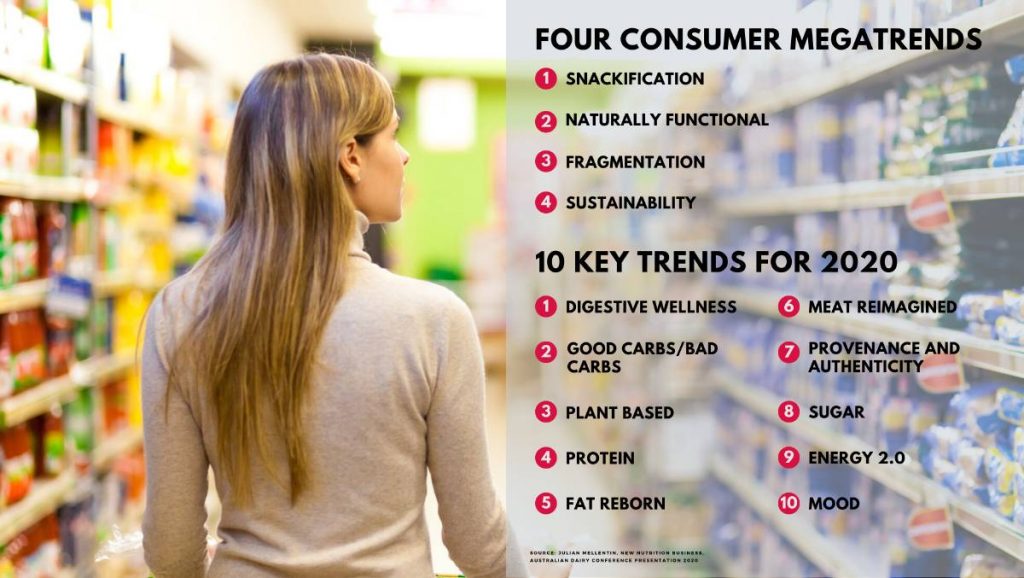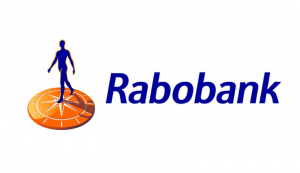
Retailers and producers who want to make money out of food need to understand consumer trends and ensure their products align with those.
Dairy has massive opportunities within these trends, particularly in promoting itself as a source of high-quality protein.
But cheap milk won’t be disappearing from supermarket shelves anytime soon, so dairy producers and farmers need to look at identifying high-value niche products to drive higher returns.
Consumer insights specialist Julian Mellentin and Woolworths head of chilled Chris Jones provided a fascinating insight at the conference into what is driving the retail market for food, around the world and locally.
Rabobank analyst Michael Harvey set the scene for the discussion.
“We are operating in a consumer-led industry and as a result you will find consumers are rattling the dairy value chain,” he said.
“The Australian consumer market is our largest dairy market and by some way.
“If you just look at the dairy aisle alone, it’s worth more than $7 million on an annual basis.
“More of our national production is now consumed in the drinking milk market than is in the skim and butter ingredients stream.
“But it is a mature market; if you look at the some stats from Dairy Australia recently, per capita rates are starting to fall slowly in some of the key categories.”
Mr Mellentin, whose consultancy New Nutrition Business helps primary producers around the world add value to their produce, said food retailing had faced massive disruption in the past 20 years.
Previously people had created a concept then gone to market with lots of money and created a large and successful brand.
“The consumer is now in control,” he said.
“All of our businesses are like corks tossed on the ocean.”
Mr Jones said Woolworths used customer data, including surveys of 30,000 customers a week, to drive its business.
“Customer data is at the core of what we do and how we do it,” he said.
Mr Mellentin said the best way for producers and companies to ride that was to understand the big trends influencing consumer behaviour.
Snackification
Snackification was the biggest mega trend in food markets, Mr Mellentin said.
It was a huge driver that was transforming all consumer food categories.
“People snack all the time; the average American snacks four to fives times a day; the average Australian about three times per day,” he said.
Some products meeting this trend were extremely profitable, Mr Mellentin said, citing as an example a lactose-free yoghurt from Sweden called ProPud.
Mr Jones said snacking and convenience were a big trend for Woolworths products – pointing to packaged cheese and crackers as an example for people looking for a snacking option that could fit into a bag or lunchbox.
Fragmentation
Mr Mellentin said fragmentation was a big trend influencing all markets.
The phone in everyone’s pocket gave them more information about food nutrition health than anybody had ever had in the whole of human history.
This meant people trusted experts less – so it was no longer possible to think about consumers as a unified group on any issue.
https://www.facebook.com/AustralianDairyfarmer/videos/223798225411190/
Protein opportunity
Mr Mellentin said dairy had a huge untapped opportunity in the high quality of its protein.
“Protein is the nutrient that can do no wrong,” he said.
“Protein is for fit bodies, firm bodies, weight management, looking good, feeling good, energy and all sorts of other motivations in consumers minds.”
There was a lot of talk about plant proteins but these simply did not compare for nutritional value with dairy protein.
Mr Mellentin gave examples of several dairy companies around the world who had successfully tapped into the high-protein trend.
Mr Jones said YoPro – a high protein yoghurt – had also partnered with the Australian Olympic team to promote its brand and had sold well in its stores.
Digestive wellness
Mr Mellentin said digestive wellness was another consumer trend driving sales of products, but it was something that people would not discuss openly.
“So consumer research has underestimated the importance of this driver,” he said.
Dairy fitted into this trend as both a negative and a positive.
Some people switched from dairy milk because they perceived it caused digestive issues.
But dairy products such as lactose-free milk, a2 milk and probiotic and fermented products offered solutions to those issues.
Mr Mellentin said Australia was a leading-edge country in many trends, including this, primarily because it was one of the richest countries in the world.
“This illustrates why people are prepared to pay a premium price for something they think they need,” he said, citing the example of Yakult that sells for $12.30 a litre.
Plant-based foods
Mr Mellentin said plant-based foods was another trend, and in the milk category, driven partly by digestive wellness.
Plant-based milks really took off in 2007 when almond milk came on to the market, offering a better taste than soy milk, which had been the only option up until then for people with digestive issues with dairy milk.
But it was still a niche product.
In the United States, it had 7 per cent of the market by volume but 14pc by value.
“So it is a big niche – it is a low-volume, high-margin niche,” he said.
“Retailers .. love plant-based milks because the cash margin, the amount of dollars they get per square metre of shelf space, is way ahead of dairy milk, which is why in supermarkets around the world you see the plant milks arranged at eye height level.”
But the dairy industry was starting to compete – offering more lactose-free alternatives, that also fetched a premium.
Food processors were struggling to produce quality non-dairy cheese and yoghurts because they could not reproduce the taste and texture of dairy.
“Non-dairy yoghurt is some water and almond powder made to stand up with starch – and have you ever tried eating wallpaper with a slight hint of almond?” Mr Mellentin said.
The word milk was well established on plant products, so the naming standards could change but it would not change consumer behaviour.
Mr Jones said Woolworths research indicated people were not confused about the product because of the name – they knew what they were buying.
But he did point out that plant-based milks had brought people who had previously stopped buying dairy back to the dairy aisle.
“We are seeing consumers that have rejected dairy for whatever reason are actually coming to the dairy fixture and what we are seeing is that when they are buying a plant-based product they are also buying a dairy product,” he said.
Woolworths strategy
Mr Jones said Woolworths based its food retailing strategy around occasions – promoting breakfast, back-to-school, Easter or other occasions when people were looking for food.
Dairy fitted into several of these categories and the strategy allowed Woolworths to create sustainable demand for products.
The company also tried to cater for different groups of consumers – so it would not be moving away from offering a cheaper supermarket-brand milk.
“I think it is about offering choice,” he said.
“There is a role absolutely that private-label milk plays, that there is the driver across the whole industry and that volume provides multiple benefits all the way through the supply chain.
“For us it is about providing choice for consumers.”
Woolworths had implemented a localisation strategy, so it was not offering the same products in every store, which meant, for example, some stores would offer little private-label milk.
Mr Jones said Woolworths drought-milk initiative had allowed it to have conversations with its customers about the value of milk.
It had also created a richer dialogue with the broader dairy industry, including with farmer groups and industry bodies.
Mr Mellentin said there was little opportunity in the commodity liquid milk market.
“Even big companies in Europe are giving up on that end of the market because they can’t make any money out of it,” he said.
The opportunity for producers exclusively supplying that market was to be as efficient as possible.
Value-add opportunity
But there was a big opportunity for dairy farmers and dairy processors to move into value-added products that aligned with the key consumer trends, Mr Mellentin said.
He gave the example of a Scottish dairy farming family Graham’s Family Dairy that had moved into processing.
Initially it had supplied supermarket label milk on a long-term contract, collecting milk from 100-plus farms.
“But they felt this really wasn’t the best way to create long-term value for their family,” Mr Mellentin said.
So they moved into value-added products, including Kefir (fermented milk), Skyr high-protein yoghurt, Jersey milk, butter and a high-protein low-sugar ice-cream, selling through Aldi. These products now account for 22pc of their sales but generate 70pc of profits.
Mr Mellentin when challenged about whether all dairy farmers could be involved in this, said farmers did not have to go it alone.
They could work together as a group to explore these options for their surplus milk, or they could partner with outsiders.
“You don’t need to go alone, the world is full of entrepreneurs and cashed-up people who have sold out of food and beverage businesses,” he said.
Mr Jones said Woolworths was selling more localised products – something that was offered in only a handful of stores in a specific region.
Gippsland Jersey milk was an example of a product that had been hugely successful in a specific region.
He encouraged farmers who were interested in developing local products to talk with Woolworths staff who could provide advice.

























